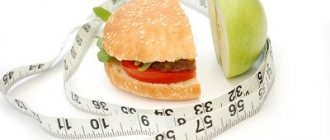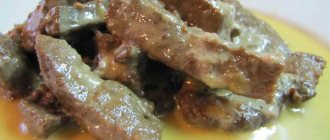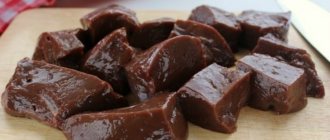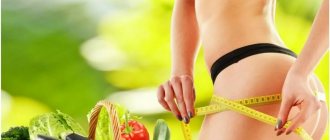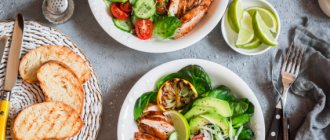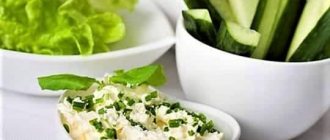General rules
Fatty liver (fatty liver, fatty hepatosis, fatty infiltration, liver steatosis) is a morphological condition of the liver in which more than 5% of the total mass of the organ is fat, mainly triglycerides .
The morphological changes in the organ are based on various etiological factors, which can be divided into two main groups: alcoholic and non-alcoholic fatty liver. And if the first is due to the systematic abuse of alcohol and the toxic effect of ethanol metabolism products ( acetaldehyde ), which cause a pronounced disturbance in fat metabolism and the accumulation of triglycerides inside the cytoplasm of the hepatocyte, then the second is due to many factors, the leading of which are overnutrition, arterial hypertension , fasting/rapid weight loss , insulin resistance , viral hepatitis B and C , genetic factors.
A potential danger with fatty infiltration of the liver is a high level of risk of developing fibrosis with transition to cirrhosis , since favorable conditions are created for the development of the inflammatory process, triggering the mechanism of morphological changes in the structure of hepatocytes and their death.
As a rule, fatty liver occurs asymptomatically or against the background of nonspecific complaints: general weakness, discomfort in the right hypochondrium. With severe fatty liver, the following may occur: skin itching, anorexia , dyspeptic disorders. Treatment and diet for fatty liver are aimed at normalizing biochemical parameters characteristic of the inflammatory process and slowing down/blocking the process of fibrogenesis .
If fatty degeneration develops against the background of overnutrition and the presence of abdominal-visceral obesity , the diet for fatty liver degeneration is primarily aimed at reducing body weight. To do this, the patient is prescribed a calorie-reduced diet with a high content of dietary fiber (vegetables/fruits) and foods with a low glycemic index.
Its selection is carried out on an individual basis, taking into account weight exceeding the physiological norm, age/gender, and level of physical activity. At the same time, the calorie content of the diet should not be reduced sharply, and even more so, fasting is unacceptable, since a rapid decrease in body weight is accompanied by the progression of fatty liver disease. On average, the calorie content of the daily diet should be in the range of 1600-2000 kcal/day, and the period of being on a hypocaloric diet should be at least 3 months.
However, it is important not to forget that nutrition aimed at losing weight must be combined with an increase in physical activity, which is especially important in cases of severe obesity and the presence of diabetes . It has been reliably proven that physical activity lasting 30-40 minutes, regardless of the type and nature of exercise, in combination with dietary nutrition, increases the sensitivity of insulin and contributes to a significantly significant normalization of biochemical parameters.
In case of fatty hepatosis against the background of physiologically normal body weight, nutrition should be aimed at sparing the liver and reducing the activity of the inflammatory process with a physiologically complete diet. This is achieved by regular meals, methods of culinary processing of foods and exclusion of a number of foods from the diet.
For this purpose, it is prohibited to consume fatty foods, especially refractory fats - margarine, solid fats of animal origin (lard, bacon), mayonnaise. Reduce/eliminate the consumption of foods high in cholesterol : egg yolks, fish caviar, fatty dairy products, fatty meats, offal, raw smoked sausages.
Products containing concentrates, preservatives and flavoring additives (long-term storage products) are not recommended - freeze-dried foods, dry juices, canned food, instant soups, confectionery products designed for a long shelf life, as well as products that have a pronounced irritating effect on the liver: smoked meats , seasonings, spices, vinegar, vegetables containing essential oils (garlic, sorrel, radishes, celery, onions, radishes), unripe berries and raw fruits (red currants, green apples, cranberries). The diet reduces the content of simple carbohydrates. Dishes prepared by frying or deep-frying are not allowed.
The liver is an organ whose uniqueness lies in its ability to potentially self-heal under favorable conditions. In this regard, it is recommended to increase the content of active substances in the diet that promote regeneration processes. A particularly pronounced hepaprotective effect is ensured by the combined intake of vitamin E , L-carnitine and phospholipids , which mutually enhance the effect of each of them.
At the same time, L-carnitine enhances the synthesis of its own phospholipids, which play an important role in the construction of hepatocyte , utilizes intracellular fat, accelerates cell repair processes, and tocopherol acetate ( vitamin E ) complements the hepatoprotective effect of essential phospholipids with an antioxidant effect (protects against oxidation) and is involved in processes of intracellular metabolism. Since it is almost impossible to obtain these ingredients with food in the optimal ratio, additional intake of the Gepagard Active dietary supplement is recommended.
Main characteristics of therapeutic nutrition for non-alcoholic fatty liver disease (NAFLD)
One of the most common concomitant pathologies in diabetes mellitus is fatty liver disease (NAFLD). Liver steatosis (fatty hepatosis, fatty infiltration of the liver) is the most common hepatosis, in which fat accumulates in the liver cells. One of the most important therapeutic measures for this disease is diet therapy. Each clinical case is individual, so it is better that the diet is calculated and selected by a nutritionist, taking into account weight, age, gender, other existing diseases, and taste habits. However, there are recommendations that are common to all patients with fatty hepatosis.
Squirrels
In case of fatty hepatosis, the daily amount of protein obtained from food should remain within the physiological norm of the patient (about 1 g/kg of body weight). Half of it comes from plant foods, and the remaining 50% comes from animal foods. Moreover, we need those proteins that consist of essential amino acids and lipotropic factors (methionine, choline, etc.). These substances can stop the further development of fatty hepatosis. They are found in:
- poultry (chicken, chickens, turkey without skin are allowed);
- animal meat (veal, beef, rabbit are acceptable);
- fish;
- dairy products (low-fat cheeses, cottage cheese, low-fat kefir, etc.);
- eggs;
- buckwheat;
- soy flour;
- oatmeal.
If you start limiting proteins, then their deficiency can only increase liver fatty degeneration. Sometimes it is detected in completely debilitated patients.
Fats
Patients with identified fatty hepatosis, as a rule, reduce the daily quota of fats in the diet to 70 g. The veto is imposed on foods with a large proportion of animal refractory fats, high cholesterol and saturated fatty acids (palmitic, myristic, lauric):
- salo;
- lamb and pork fat;
- smoked meats;
- fatty pork and lamb;
- goose;
- duck meat;
- egg yolk;
- meat by-products (kidneys, brains, liver);
- caviar;
- hard margarine;
- fatty dairy products.
However, about two-thirds of fats should be of animal origin. Preferred products are rich in healthy polyunsaturated fatty acids (linolenic, docosahexaenoic, eicosapentaenoic), which normalize altered fat metabolism. They are located in:
- sea fish oil (sardines, herring, horse mackerel, etc.), obtained from their carcasses (traditional fish oil is extracted from cod liver);
- bird;
- seafood (crabs, squid, shrimp, etc.).
A third of fats should come from plant foods. Patients are shown all kinds of vegetable oils (corn, cottonseed, sunflower, olive, peanut, etc.) and olives rich in the already mentioned polyunsaturated fatty acids. These oils can replace sour cream, hard margarine, and butter.
At the same time, we should not forget about the prohibition of frying and deep-frying, which damage all beneficial polyunsaturated fatty acids. Boiling, baking, stewing are allowed.
Thoughtlessly restricting the fat component of the diet can cause hormonal changes (including hormones that regulate the reproductive system), a deficiency of fat-soluble vitamins, and skin changes.
Carbohydrates
Complex carbohydrates, which vegetables are rich in, reduce the absorption of fats by the intestinal wall and normalize cholesterol metabolism.
The reduction in carbohydrates necessary for fatty liver disease is achieved by limiting simple refined sugars, which enhance fat formation by acting as triglyceride precursors. They are found in:
- semolina;
- sweet baked goods;
- bakery products made from premium or first grade flour;
- rice;
- ice cream;
- sweets (only up to 30 g of sugar per day is allowed), etc.
The diet is enriched with food containing complex (indigestible) carbohydrates. They are pectins, cellulose, hemicellulose, gluten. These dietary fibers reduce the absorption of fats from the intestine and improve cholesterol metabolism. They are rich in:
- legumes;
- nuts;
- vegetables (carrots, beets, turnips, cabbage, parsnips, etc.);
- berries (black currants, raspberries, etc.);
- fruits (plums, apples, oranges, pears, etc.);
- seaweed;
- bran (rye, soy, wheat);
- uncrushed grain.
Calorage
The energy value of the diet is determined by the actual weight of the patient. If it is in the normal range, then the calorie intake should correspond to the physiological needs and real energy consumption of a particular organism.
A different approach is necessary if a patient is found to be overweight. After all, its normalization is one of the goals of treating established fatty hepatosis. There are special mathematical formulas that allow you to establish the required level of energy value of the daily diet. They take into account gender, age, physical activity, and concomitant diseases. Typically, nutritionists try to create a diet in which kilocalories are reduced by 500–700 units compared to the calculated value. At the same time, doctors believe that limiting daily caloric intake to less than 1200 kcal (for women) and 1500 kcal (for men) is already dangerous.
It is best to follow a hypocaloric diet under close medical supervision. The most effective and harmless is losing weight by 1–1.6 kg per week. With a more accelerated rate of weight loss, the risk of stones in the biliary system increases significantly.
Additional recommendations
Patients with fatty hepatosis should remember well that such nutrition should not be a momentary impulse, but a lifelong and conscious modification of the diet. Only then will it be truly effective.
The effectiveness of diet therapy can be significantly enhanced by regular physical activity.
The opinion of scientists about the advisability of using drugs is ambiguous. But many practitioners understand that not all patients can undergo a liver biopsy to differentiate fatty liver disease from steatohepatitis. Therefore, these doctors recommend different drugs to their patients (Metformin, Heptral, Silymarin, Thiogamma, ursodeoxycholic acid agents, etc.). The choice of drug often depends on other manifestations of fat metabolism disorders or other associated ailments.
In the most extreme cases (for example, with concomitant obesity of the 4th degree), surgical methods of weight loss are sometimes resorted to.
Gastroenterologist Portnov M.V.
Authorized Products
The diet for fatty liver should include:
- Well-baked dried/day-old white bread/crackers (if tolerated, black bread can also be used) without burnt crusts.
- Vegetable/weak meat broths and soups based on them with the addition of well-cooked cereals and vegetables. When preparing meat/fish broths, during the cooking process, drain the first broth and cook the meat/fish in a new portion of water until cooked.
- Dietary varieties of red meat (lean veal/beef), rabbit, chicken, turkey. Meat must be thoroughly cleaned of fat/tendons, and poultry from skin. Boiled meat can be further cooked.
- Low-fat fish (bream, pollock, pike perch, perch, hake, cod) in pieces or chopped, boiled, baked.
- Porridge, noodles and small pasta cooked in water. Allowed to be consumed in the form of casseroles with cottage cheese.
- Vegetables (cucumbers, cabbage - white, cauliflower, zucchini, beets, potatoes, carrots, pumpkin) raw and baked. You can add some garden herbs to salads.
- Low-fat fermented milk products, the consumption of which should be reduced or stopped when dyspeptic disorders occur.
- Sweet ripe berries/fruits: peaches, pears, apples, apricots, overripe bananas, strawberries, currants, kiwi, prunes, figs, persimmons, cherries, quinces, plums, pomegranates, watermelons, dates, dried apricots, raisins, blueberries. Grapes, as well as juices, compotes, jelly and jelly from them.
- In moderation: caramel, marmalade, jam, marshmallows, preserves, toffee.
- Refined/unrefined vegetable oil (corn, olive).
- Liquid up to 2 l. It is recommended to drink freshly prepared/diluted juices, herbal teas, rosehip infusion, and still mineral water.
Table of permitted products
| Proteins, g | Fats, g | Carbohydrates, g | Calories, kcal | |
Vegetables and greens | ||||
| eggplant | 1,2 | 0,1 | 4,5 | 24 |
| zucchini | 0,6 | 0,3 | 4,6 | 24 |
| cabbage | 1,8 | 0,1 | 4,7 | 27 |
| broccoli | 3,0 | 0,4 | 5,2 | 28 |
| carrot | 1,3 | 0,1 | 6,9 | 32 |
| cucumbers | 0,8 | 0,1 | 2,8 | 15 |
| salad pepper | 1,3 | 0,0 | 5,3 | 27 |
| parsley | 3,7 | 0,4 | 7,6 | 47 |
| iceberg lettuce | 0,9 | 0,1 | 1,8 | 14 |
| tomatoes | 0,6 | 0,2 | 4,2 | 20 |
| pumpkin | 1,3 | 0,3 | 7,7 | 28 |
| dill | 2,5 | 0,5 | 6,3 | 38 |
Fruits | ||||
| bananas | 1,5 | 0,2 | 21,8 | 95 |
| apples | 0,4 | 0,4 | 9,8 | 47 |
Nuts and dried fruits | ||||
| raisin | 2,9 | 0,6 | 66,0 | 264 |
| dried figs | 3,1 | 0,8 | 57,9 | 257 |
| dried apricots | 5,2 | 0,3 | 51,0 | 215 |
| dried apricots | 5,0 | 0,4 | 50,6 | 213 |
| prunes | 2,3 | 0,7 | 57,5 | 231 |
Cereals and porridges | ||||
| buckwheat (kernel) | 12,6 | 3,3 | 62,1 | 313 |
| oat groats | 12,3 | 6,1 | 59,5 | 342 |
| pearl barley | 9,3 | 1,1 | 73,7 | 320 |
| rice | 6,7 | 0,7 | 78,9 | 344 |
Flour and pasta | ||||
| pasta | 10,4 | 1,1 | 69,7 | 337 |
| noodles | 12,0 | 3,7 | 60,1 | 322 |
| buckwheat noodles | 14,7 | 0,9 | 70,5 | 348 |
Bakery products | ||||
| bran bread | 7,5 | 1,3 | 45,2 | 227 |
| whole grain bread | 10,1 | 2,3 | 57,1 | 295 |
Confectionery | ||||
| jam | 0,3 | 0,2 | 63,0 | 263 |
| jelly | 2,7 | 0,0 | 17,9 | 79 |
| marshmallows | 0,8 | 0,0 | 78,5 | 304 |
| milk candies | 2,7 | 4,3 | 82,3 | 364 |
| fondant candies | 2,2 | 4,6 | 83,6 | 369 |
| fruit and berry marmalade | 0,4 | 0,0 | 76,6 | 293 |
Raw materials and seasonings | ||||
| honey | 0,8 | 0,0 | 81,5 | 329 |
| sugar | 0,0 | 0,0 | 99,7 | 398 |
Dairy | ||||
| kefir 1.5% | 3,3 | 1,5 | 3,6 | 41 |
| Ryazhenka | 2,8 | 4,0 | 4,2 | 67 |
Cheeses and cottage cheese | ||||
| cottage cheese 1% | 16,3 | 1,0 | 1,3 | 79 |
Meat products | ||||
| beef | 18,9 | 19,4 | 0,0 | 187 |
| rabbit | 21,0 | 8,0 | 0,0 | 156 |
Bird | ||||
| boiled chicken breast | 29,8 | 1,8 | 0,5 | 137 |
| boiled chicken drumstick | 27,0 | 5,6 | 0,0 | 158 |
| boiled turkey fillet | 25,0 | 1,0 | — | 130 |
Eggs | ||||
| soft-boiled chicken eggs | 12,8 | 11,6 | 0,8 | 159 |
Fish and seafood | ||||
| flounder | 16,5 | 1,8 | 0,0 | 83 |
| pollock | 15,9 | 0,9 | 0,0 | 72 |
| cod | 17,7 | 0,7 | — | 78 |
| hake | 16,6 | 2,2 | 0,0 | 86 |
Oils and fats | ||||
| butter | 0,5 | 82,5 | 0,8 | 748 |
| olive oil | 0,0 | 99,8 | 0,0 | 898 |
| sunflower oil | 0,0 | 99,9 | 0,0 | 899 |
Non-alcoholic drinks | ||||
| water | 0,0 | 0,0 | 0,0 | — |
| mineral water | 0,0 | 0,0 | 0,0 | — |
Juices and compotes | ||||
| apricot juice | 0,9 | 0,1 | 9,0 | 38 |
| carrot juice | 1,1 | 0,1 | 6,4 | 28 |
| peach juice | 0,9 | 0,1 | 9,5 | 40 |
| plum juice | 0,8 | 0,0 | 9,6 | 39 |
| tomato juice | 1,1 | 0,2 | 3,8 | 21 |
| pumpkin juice | 0,0 | 0,0 | 9,0 | 38 |
| rose hip juice | 0,1 | 0,0 | 17,6 | 70 |
| * data is per 100 g of product | ||||
Products recommended for consumption
It is necessary to take care to enrich the daily diet with products that contain large amounts of methionine, inositol, betanyl and choline. These substances help enhance the synthesis of lecithin in the liver tissue. Fiber and pectins can improve digestion.
Best suited for daily use:
- Dietary types of fish and meat, steamed, boiled or baked in the oven. Each patient must take care of his health, so it is better to give preference to products purchased on the market. The fact is that chickens that are raised in mass production also contain traces of antibiotics and hormones that promote the growth of muscle mass in the bird and put a strain on the human liver.
- Vegetable oils (no more than 40 g per day);
- Fresh vegetables and fruits;
- Seafood;
- Low-fat dairy and fermented milk products;
- Egg white;
- Cereals;
- Dried fruits, honey and biscuits.
You should always remember that the liver is a kind of cleansing filter for our body, so any disturbances in its functioning do not have the best effect on the functioning of other organs and systems. If you have a history of fatty hepatosis, then you need to approach this diagnosis with all caution and follow absolutely all the doctor’s recommendations on nutrition. It is protecting the liver from the attack of saturated fats that will help prevent further progression of this pathology.
Fully or partially limited products
The diet for fatty liver should exclude:
- Fatty poultry/fish, fatty meat, offal (liver, kidneys), cooking fats, fried foods, mayonnaise, smoked meats.
- Chocolate, confectionery, cream products (cakes, pastries), butter/puff pastry.
- Legumes, cabbage, if it causes bloating, okroshka/sauerkraut soup.
- Mushrooms, sorrel, garlic, radish, onion, spinach, radish
- Strong tea, coffee, cocoa.
- Juices from packages, carbonated drinks, alcohol.
- Pickled/salted foods, hot sauces, vinegar, mustard, horseradish, ketchup, pepper.
- Raw chicken eggs (soft-boiled, no more than three per week).
- Spicy cheese, whole milk. The consumption of fatty cottage cheese and yogurt, sweet cheeses, fermented baked milk, and sour cream is limited.
Table of prohibited products
| Proteins, g | Fats, g | Carbohydrates, g | Calories, kcal | |
Vegetables and greens | ||||
| canned vegetables | 1,5 | 0,2 | 5,5 | 30 |
| swede | 1,2 | 0,1 | 7,7 | 37 |
| peas | 6,0 | 0,0 | 9,0 | 60 |
| bulb onions | 1,4 | 0,0 | 10,4 | 41 |
| chickpeas | 19,0 | 6,0 | 61,0 | 364 |
| radish | 1,2 | 0,1 | 3,4 | 19 |
| white radish | 1,4 | 0,0 | 4,1 | 21 |
| beans | 7,8 | 0,5 | 21,5 | 123 |
| horseradish | 3,2 | 0,4 | 10,5 | 56 |
| spinach | 2,9 | 0,3 | 2,0 | 22 |
| sorrel | 1,5 | 0,3 | 2,9 | 19 |
Berries | ||||
| grape | 0,6 | 0,2 | 16,8 | 65 |
Mushrooms | ||||
| mushrooms | 3,5 | 2,0 | 2,5 | 30 |
| marinated mushrooms | 2,2 | 0,4 | 0,0 | 20 |
Nuts and dried fruits | ||||
| nuts | 15,0 | 40,0 | 20,0 | 500 |
| almond | 18,6 | 57,7 | 16,2 | 645 |
Snacks | ||||
| potato chips | 5,5 | 30,0 | 53,0 | 520 |
Flour and pasta | ||||
| vareniki | 7,6 | 2,3 | 18,7 | 155 |
| dumplings | 11,9 | 12,4 | 29,0 | 275 |
Bakery products | ||||
| buns | 7,9 | 9,4 | 55,5 | 339 |
| Rye bread | 6,6 | 1,2 | 34,2 | 165 |
Confectionery | ||||
| pastry cream | 0,2 | 26,0 | 16,5 | 300 |
| shortbread dough | 6,5 | 21,6 | 49,9 | 403 |
Ice cream | ||||
| ice cream | 3,7 | 6,9 | 22,1 | 189 |
Chocolate | ||||
| chocolate | 5,4 | 35,3 | 56,5 | 544 |
Raw materials and seasonings | ||||
| mustard | 5,7 | 6,4 | 22,0 | 162 |
| mayonnaise | 2,4 | 67,0 | 3,9 | 627 |
Dairy | ||||
| milk 4.5% | 3,1 | 4,5 | 4,7 | 72 |
| cream 35% (fat) | 2,5 | 35,0 | 3,0 | 337 |
| whipped cream | 3,2 | 22,2 | 12,5 | 257 |
Cheeses and cottage cheese | ||||
| parmesan cheese | 33,0 | 28,0 | 0,0 | 392 |
Meat products | ||||
| fatty pork | 11,4 | 49,3 | 0,0 | 489 |
| salo | 2,4 | 89,0 | 0,0 | 797 |
| bacon | 23,0 | 45,0 | 0,0 | 500 |
Sausages | ||||
| smoked sausage | 9,9 | 63,2 | 0,3 | 608 |
Bird | ||||
| smoked chicken | 27,5 | 8,2 | 0,0 | 184 |
| duck | 16,5 | 61,2 | 0,0 | 346 |
| smoked duck | 19,0 | 28,4 | 0,0 | 337 |
| goose | 16,1 | 33,3 | 0,0 | 364 |
Fish and seafood | ||||
| smoked fish | 26,8 | 9,9 | 0,0 | 196 |
| black caviar | 28,0 | 9,7 | 0,0 | 203 |
| salmon caviar granular | 32,0 | 15,0 | 0,0 | 263 |
| salmon | 19,8 | 6,3 | 0,0 | 142 |
| canned fish | 17,5 | 2,0 | 0,0 | 88 |
| salmon | 21,6 | 6,0 | — | 140 |
| trout | 19,2 | 2,1 | — | 97 |
Oils and fats | ||||
| animal fat | 0,0 | 99,7 | 0,0 | 897 |
| cooking fat | 0,0 | 99,7 | 0,0 | 897 |
Alcoholic drinks | ||||
| dry red wine | 0,2 | 0,0 | 0,3 | 68 |
| vodka | 0,0 | 0,0 | 0,1 | 235 |
| beer | 0,3 | 0,0 | 4,6 | 42 |
Non-alcoholic drinks | ||||
| soda water | 0,0 | 0,0 | 0,0 | — |
| cola | 0,0 | 0,0 | 10,4 | 42 |
| instant coffee dry | 15,0 | 3,5 | 0,0 | 94 |
| sprite | 0,1 | 0,0 | 7,0 | 29 |
| * data is per 100 g of product | ||||
Reviews and results
As evidenced by the reviews of most patients, with fatty liver it is the diet that allows them to get rid of heaviness and discomfort in the right hypochondrium, constipation and bitterness in the mouth in a fairly short period. And, conversely, with fatty foods, pain in the right hypochondrium intensifies, which emphasizes the importance of proper nutrition.
- “... When examining my liver after suffering from hepatitis, I was diagnosed with fatty liver. I was very upset, but the doctor said that with the right diet, regression of the disease can be achieved within 6-12 months. Therefore, I very carefully chose everything that can be eaten if you have fatty liver and I do not violate this list. Indeed, only 3 months have passed since I have been on therapeutic nutrition, but I already feel good. There is little fat in my diet, mainly high quality unrefined vegetable oils (cold pressed) and butter. I eat a lot of vegetables and fruits, and also take hepaprotective drugs - phospholipids, milk thistle, artichoke, vitamins. I hope that by the specified date I will have restored my liver”;
- “... After fatty foods and heavy libations, I immediately begin to feel my liver. I went to the clinic. Diagnosis: fatty liver. I took care of my diet and went to the gym, as the doctor advised. I tolerate the diet easily, alternating lean boiled meat with fish, eating them with vegetables, and eating porridge separately. I try to cook food in a double boiler, conveniently and quickly.”
Basic principles of the diet
Every day, a patient weighing approximately 78-80 kg should consume 100-120 grams of protein, 70-80 grams of fat and about 250-300 grams of carbohydrates, of which only 50 can be simple. Salt consumption should be limited to 7 grams, and the amount of liquid should fluctuate around 1.5-2 liters.
The lion's share of attention should be given to proper consumption of animal protein, because it is this that will help speed up the course of repair processes in the liver. Research conducted by Pevzner has proven that high-quality animal protein in sufficient quantities can be obtained not only from meat, but also from cottage cheese.
Cherkesov Vladimir Nikolaevich
Hepatologist, gastroenterologist, Candidate of Medical Sciences
Ask a Question
Due to the fact that impaired cholesterol metabolism is a common symptom of liver disease, all patients are recommended to enrich their diet with foods rich in fiber (vegetables and fruits). They can help remove excess cholesterol from the body during normal functioning of the gastrointestinal tract.
The total amount of liquid consumed should be about 2 liters. These include not only water drunk per day, but also tea, juices, soups, etc. If the kidneys are functioning normally, the amount of salt consumed should not exceed 7 grams, and if their functioning is impaired, it is better to limit it to 2-4 grams. Limiting the amount of fluid is necessary only if cirrhosis develops or as recommended by a doctor.
The diet needs to be supplemented not only with nutrients, but also with vitamins and minerals. Particular attention should be paid to the consumption of foods containing large amounts of riboflavin, vitamin B 12 and niacin.
All dishes must be served warm. It is best to give preference to boiling, baking food in a sleeve and steaming food. Meals should be divided into fractions, so you need to prepare about 5-6 meals in advance and eat them at intervals of 2-3 hours.

